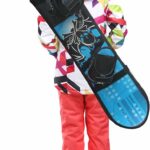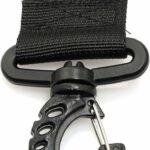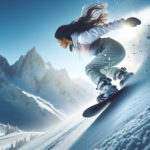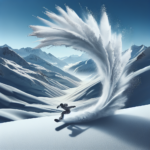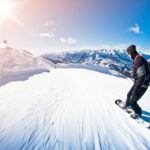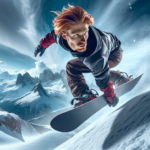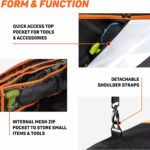You’re interested in experiencing the thrill of sliding down snow-covered slopes on a board, aren’t you? Congratulations on wanting to become a part of the exhilarating world of snowboarding! This captivating article will guide you through everything you need to embark on this exciting journey. From choosing the right board, suitable clothing and accessories, to the essential training tips, it provides you with all the tools required to start your snowboarding adventure. So, strap yourself in, because this isn’t a journey you want to miss!
Understanding the Basics of Snowboarding
Snowboarding is a popular winter sport that can be a thrilling experience, but you need to understand the basics before you hit the slopes. Here we will guide you through what snowboarding is, its history, and some popular destinations where you can enjoy snowboarding.
What is Snowboarding?
Snowboarding is a winter sport that involves descending a slope covered with snow while standing on a snowboard, a flat board with bindings for your feet. It’s a challenging yet exciting sport that requires balance, focus, and sometimes a bit of bravery!
History of Snowboarding
Snowboarding might seem like a relatively new sport, but it actually has quite a rich history. It was first developed in the United States in the 1960s and 1970s as a hybrid of skiing, surfing, and skateboarding. Over the years, snowboarding has evolved into the sport we know today, with its own set of rules, equipment, and culture.
Popular Snowboarding Destinations
Some of the most popular snowboarding destinations in the world are Aspen in the United States, Whistler in Canada, and Niseko in Japan. These places offer fantastic snow quality and a range of slopes for different levels of experience.
Essential Snowboarding Gear
If you’re planning to snowboard, there’s specific gear you need to make sure you are safe and have the best possible experience on the slopes. Let’s delve further into essential snowboarding gear.
Snowboards
The key piece of snowboarding equipment is, of course, the snowboard itself. These come in various shapes and sizes, designed for different types of riding. For starters, picking a versatile all-mountain board would be a good choice.
Bindings
Bindings are critical as they connect you to your board. They secure your boots in place, transferring your movements to the snowboard. There are different types of bindings to choose from, depending on your riding style.
Boots
Your snowboarding boots must be comfortable and warm, as well as provide good support. You should choose boots that fit well and match your riding style.
Helmets
A helmet is an absolute must for safety. It can prevent the majority of serious head injuries during falls. Make sure that your helmet fits correctly and is designed specifically for snowboarding.
Goggles
Snowboarding goggles protect your eyes from the snow and wind and improve your visibility, which is crucial for your safety. Look for goggles that will shield you from UV rays and have anti-fog features.
Choosing the Right Snowboard
Choosing the right snowboard might seem complex, given the broad range of choices. Here are some factors you need to consider.
Types of Snowboards
Snowboards come in various shapes and designs. All-mountain boards are the most versatile and suitable for beginners. Freestyle boards are lighter and easier to maneuver, making them great for tricks. Powder boards are built for deep snow, while freeride boards are for backcountry terrain.
Choosing the Right Length
The right length of a snowboard will depend on your weight and the kind of riding you want to do. However, a general rule is to choose a snowboard that reaches somewhere between your chin and nose when stood upright.
Choosing the Right Width
The width of the snowboard should be sufficient to let your feet extend just slightly over the edges of the board. Choosing the right width ensures you have excellent control when making turns and prevents your toes from dragging in the snow.
Choosing the Right Flex
The flex of a snowboard can significantly impact its performance. A softer flex allows for easy turn initiation, making them great for beginners and park riders. In contrast, a firmer flex offers stability at higher speeds and is suitable for freeriding and fast descents.
Choosing the Right Snowboarding Boots
Snowboarding boots play a crucial role in your overall snowboarding experience. Here’s how to go about choosing the right pair.
Understanding Boot Sizes
Snowboarding boot sizes follow the standard shoe sizing. However, they might feel snugger as they’re designed to support your foot and ankle firmly. Try on a few different sizes to find the perfect fit.
Understanding Boot Flex
The flex of your boots should correspond to your riding style and ability level. Softer boots allow more maneuverability, which is suitable for freestyle and beginner riders. On the other hand, stiffer boots offer more control and are great for freeriding or making aggressive turns.
Comfort and Performance Considerations
The most important aspect to consider when buying snowboarding boots is comfort. Look for boots with good insulation and padding. Additionally, high-performance boots often have features like heat molding and customizable insoles for an even better fit.
Choosing the Right Snowboarding Bindings
Binders hold your boots to your snowboard and transfer your body movements to the board. Let’s look at how to decide on the perfect bindings.
Types of Snowboarding Bindings
There are three main types of snowboard bindings: strap-in, step-in, and hybrid. Strap-in bindings are the most common type and offer superb control. Step-in bindings are easy to use, while hybrid bindings combine the features of the previous two types.
Matching Bindings to Your Board and Your Style
When selecting bindings, you should ensure they match the flex of your snowboard and your boots. Additionally, you should take your riding style into account. For example, freestyle riders tend to prefer softer bindings while freeriders might opt for stiffer bindings for better control.
Choosing the Right Size and Fit
Bindings come in different sizes, and it’s vital to get a pair that matches your boot size closely. They should grip your boots tightly, but without causing any discomfort.
Choosing the Right Snowboarding Outfit
What you wear while snowboarding significantly impacts your comfort and safety. Let’s explore how to choose the right snowboarding outfit.
Understanding Layering
Layering is important when dressing for snowboarding. You should start with moisture-wicking base layers, add an insulating middle layer, and then a waterproof and windproof outer layer. This will keep you warm and dry.
Choosing the Right Jacket and Pants
Your jacket and pants need to be waterproof and breathable. They should also have enough insulation to keep you warm. Look for features such as snow skirts, sealed seams, and venting systems for optimal comfort.
Choosing the Right Gloves
When it comes to gloves, they should be waterproof, insulated, and durable. You’ll also want them to have wrist straps to prevent you from losing them on the slopes.
Choosing the Right Socks
Socks are one part of your gear that often gets overlooked. The right socks can keep your feet warm and dry. Look for socks specifically made for snowboarding and avoid cotton ones as they absorb moisture.
Snowboarding Safety
Safety is paramount when snowboarding. Let’s consider how you can protect yourself while enjoying the sport.
Importance of Helmets
Helmets are a lifesaver in any high-speed sport. They significantly reduce the risk of serious head injuries during falls or collisions.
Use of Wrist Guards and Pads
Using wrist guards and pads can help protect you from common snowboarding injuries during falls. They provide extra support and protection to your vulnerable joints.
Understanding Mountain Safety
Every snowboarder needs to understand mountain safety. This includes knowing the rules of the slope, being aware of weather conditions and avalanche risk, and staying within your limits.
Getting Started with Snowboarding
Ready to get started with snowboarding? Let’s explore the basics you need to know before you get out there.
Learning Basic Skills
Before hitting the slopes, you must learn basic snowboarding skills. These include, but aren’t limited to, snowboarding stance, how to turn and stop, and how to fall correctly.
Understanding Snowboarding Etiquette
Snowboarding etiquette is vital for everyone’s safety on the slope. This includes respecting other riders, staying out of closed areas, and yielding to those beneath you.
Finding a Good Mountain to Begin On
As a newbie to snowboarding, you should find a good beginner-friendly mountain. Look for resorts that have wide, gentle slopes and quality snowboarding schools.
Improving Your Snowboarding Skills
As with any other sport, improving in snowboarding requires time, effort, and dedication. Let’s look at how to get better at this exciting sport.
Taking Lessons
Lessons are a great way to improve your skills regardless of your level. A good instructor can provide valuable feedback and tips that can significantly enhance your riding.
Practicing Regularly
Regular practice is key for improvement. Try to spend as much time on the slopes as possible. Be patient and don’t be discouraged by falls — they’re part of the learning process.
Challenging Yourself on Different Terrains
Don’t hesitate to try out different terrains as your skills improve. Riding on different slope gradients and snow conditions can be very beneficial for your skill development.
Maintaining Your Snowboarding Gear
Maintaining your snowboarding gear can extend its life and keep it in top performance. Here’s what you need to know.
Cleaning Your Gear
Cleaning your gear regularly is crucial. It will not only improve the lifespan of your equipment but also ensure you have a smooth ride.
Repair and Maintenance of Snowboards
Regular check-up and necessary repairs of snowboards need to be done to maintain their performance and durability. Look out for any visible damage or wear and tear.
Storing Your Gear Properly
Proper storage of your gear is also crucial. Make sure you dry your equipment thoroughly before storing it in a cool and dry place. Proper storage can significantly increase its longevity.
That wraps up our comprehensive guide on snowboarding! Remember, the goal of snowboarding is not only to get better but also to have fun. So, get out there, be safe, and enjoy the ride!
- What Snowboard Bindings Should I Get? - January 23, 2024
- What Size Screws For Snowboard Bindings? - January 23, 2024
- How To Snowmobile On Water? - January 23, 2024

